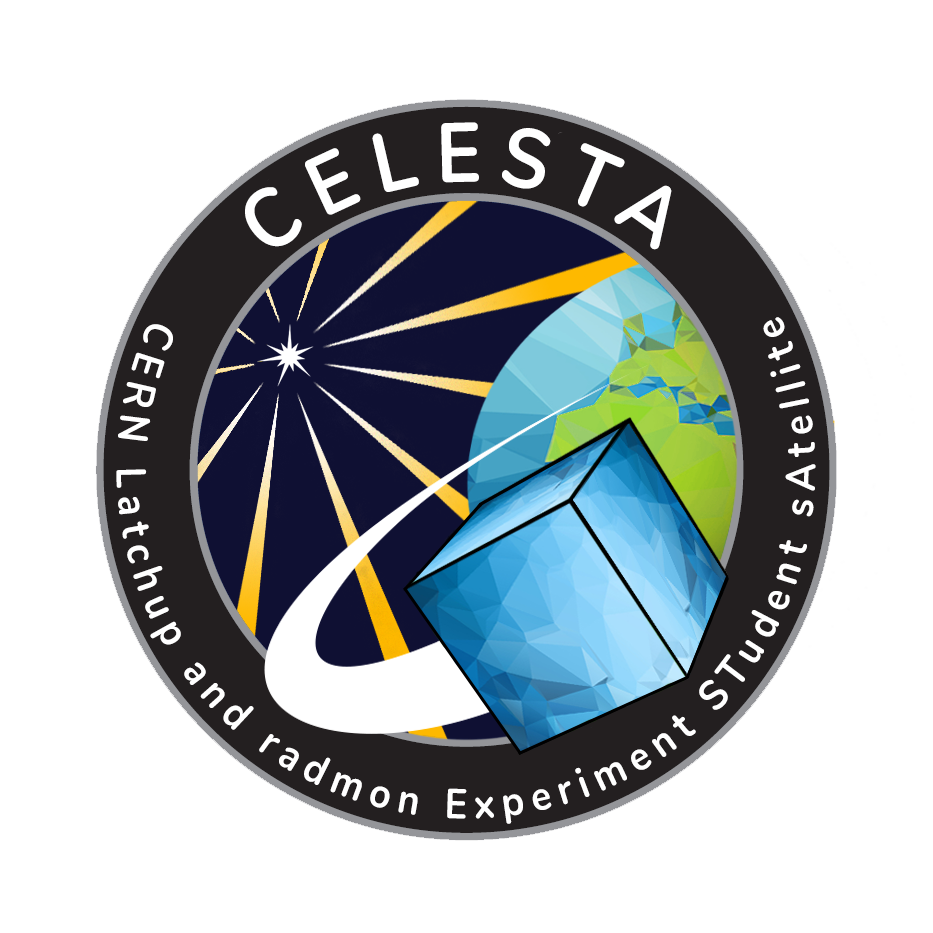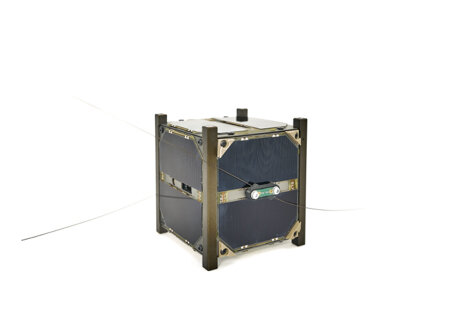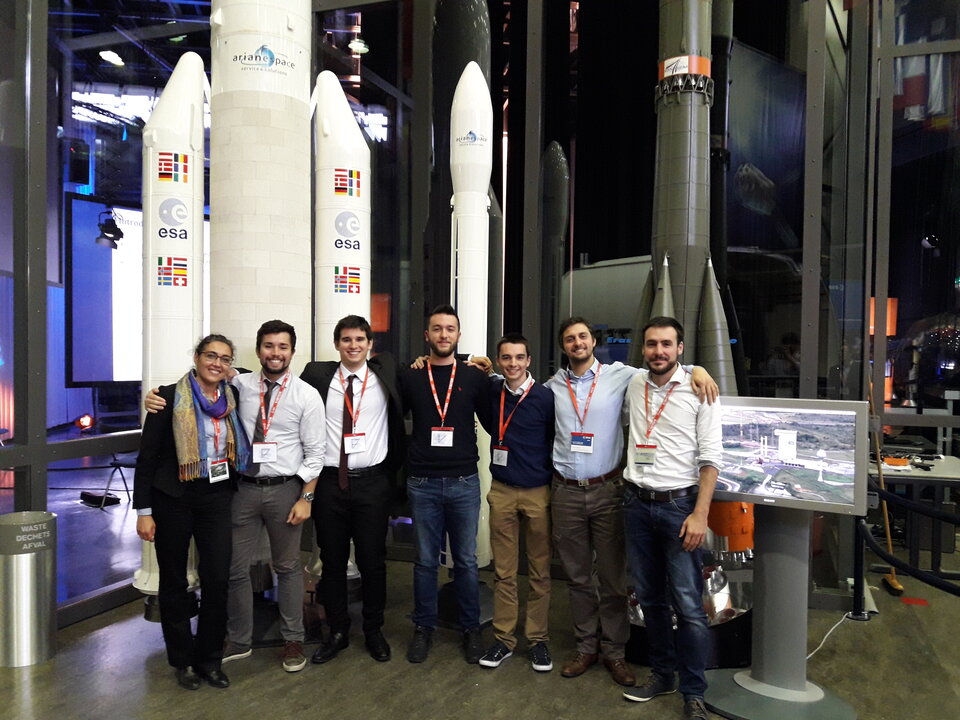Meet the team: CELESTA
The CELESTA team is no longer participating in the Fly Your Satellite! programme.
The CELESTA project is a university project whose educative objective is to involve as many students as possible in all aspects of a 1U CubeSat project development and operation (engineering, product assurance, management and sustainability). The second objective is scientific, it consists in monitoring the Low Earth Orbit (LEO) environment and performing in-orbit testing of the 1U CubeSat platform developed by the University of Montpellier. The satellite payload is a module including a radiation monitor, or RadMon, and a Single Event Latch-up (SEL) experiment, both developed by CERN through several PhD programs.
The mission

Beyond the educational objective, the project has also two scientific objectives: one is to develop and test in space a version of CERN’s radiation monitor (RadMon) coupled with the mentioned latch-up experiment; the second is to show that the space radiation environment of Low Earth Orbit can be reproduced in CERN’s high energy accelerator mixed field facility (CHARM). This would open the use for space system qualification activities at CHARM, and provide a radiation monitor module for future missions.
The team

The team is a group of students, working under the lead of teachers and Engineers at the University of Montpellier. The students are both undergraduate and graduate (Master, Doctorate or Post-doctoral) working in the frame of mandatory internships or part time student jobs. A satellite project requires a great variety of skills which is achieved by taking ok students from Mechanical Engineering, Electrical Engineering, Space Systems engineering and computer sciences, but also some students from Humanities. Students are advised by experienced staff. Systems aspects are supervised by Mr Xavier LAURAND while Project management and Product Assurance are managed by Dr. Muriel BERNARD. Both are senior engineers with experience in the aerospace industry. The endorsing professor is an expert in Radiation effects on EEE parts.
CubeSat quick facts
| Payload | The payload proposes a two-fold test setup combining a radiation monitoring unit and a latch-up test station. While the former is based on CERN’s RadMon used in challenging mixed field radiation environments in high-energy accelerators, the latter will focus on latch-up measurements in memory components of particular interest for accelerator applications, but also involving applications in areas such as ground (avionics, railway and automobile) as well as space industries. |
| Ground station | Montpellier, France. The identifier of the radioham Ground Station is F4KJX. |
| Dimensions | Stowed <100mm, 100mm, 113.5mm> |
| Mass | 931 g (TBC) |
| Power consumption | 1.8 Wh per orbit, up to 5W peak power |
| Solar panels | 6 solar panels in parallel, 2 solar cells in series per panel |
| Mission lifetime | 3 to 4 months |
| Website | www.csu.edu.umontpellier.fr/ |


